Bugs are some of the most common pests you can find indoors. Catching them can prove complicated if they can jump. Some of the most common bugs that can hop are found indoors while others rarely enter homes.
The capacity to jump is either tied to hunting or defending tactics. Spiders are known to sometimes jump on prey in ambushing techniques. Other bugs can jump a distance a few times larger than themselves as a means of escaping predation.
The following species are the most common bugs that can jump.
Table of Contents
1. Springtails
Springtails are the most common type of bug that can hop. These small dark creatures are often seen inside of the house, especially in bathrooms as they like high humidity.
Springtails can jump at least a few inches. This is possible with a dual or fork-like system found under their abdomens that works on a click-like basis.
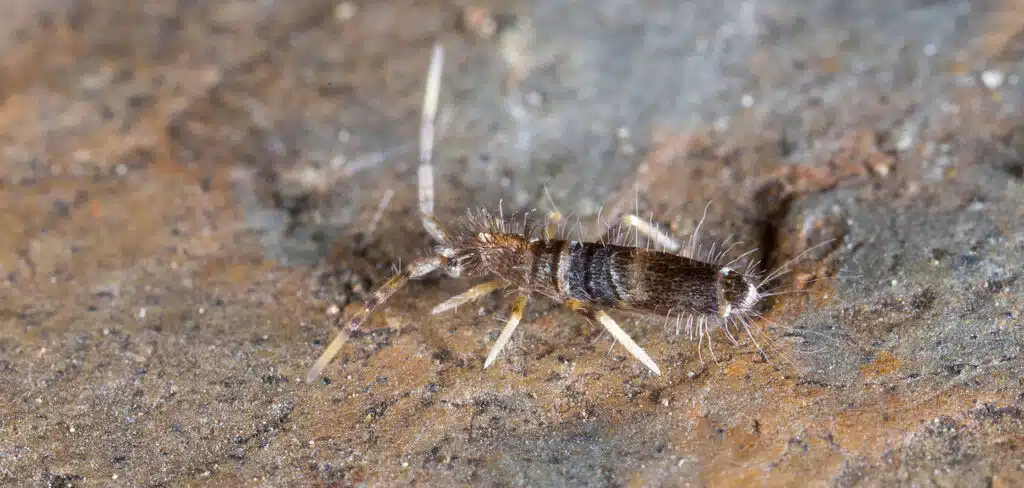
These bugs can be difficult to catch or even to vacuum. Springtails can make it indoors seeking humidity or warmth in the winter.
The most common places springtails like are the basement and the bathroom, followed by the kitchen.
These bugs may also favor all other areas of the house if there’s a potted plant with damp soil around.
Bugs of this genus are known for their gray-silver color. Springtails tend to live in groups seeing one is a guarantee more bugs can follow soon.
You need to limit indoor air humidity levels to eliminate springtails.
2. Fleas
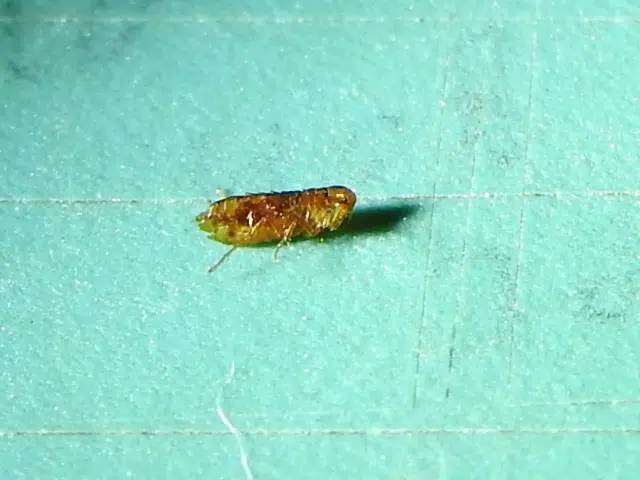
Fleas are excellent jumpers. A typical flea can jump up to 50 times its own body size. Small but powerful, fleas are excellent jumpers if they have good acceleration momentum.
Fleas sprint and then jump. The sprinting part of the movement isn’t easy to spot since these bugs have very small legs.
These small biting bugs are identified by their brown-red body color.
Many believe fleas to have very muscular legs which would allow them to jump such a long distance.
The popular jumping abilities of fleas are what make many people fear these bugs.
Keeping fleas out of the house often involves cleaning pets and the area pets live.
The bedding of cats and dogs needs to be vacuumed and washed frequently.
Soap and water can prevent flea infestations.
Frequently vacuuming houses with pets is also necessary. This lowers the risk of flea bites and flea spreading throughout the house.
3. Silverfish
Silverfish are some of the most agile types of bugs. They can hop up to 2 feet in the air making them very difficult to catch.
The jumping abilities of the species are as athletic as their running skills. Silverfish are some of the faster-running bugs that can enter homes.
These are some of the oldest species of bugs in the world as silverfish have been around since the age of dinosaurs.
Silverfish are very difficult to eliminate as they live long and because they can survive long periods without food.
Some silverfish live up to 6 years in homes with plenty of food.
Furthermore, these hopping bugs can also go for months without eating.
The normal diet of silverfish is varied. They eat all types of organic and even inorganic matter found in homes.
For example, silverfish eat paper and cardboard they find in basements. They also eat mold in bathroom corners or toothpaste also found in most bathrooms.
4. Jumping Bristletails
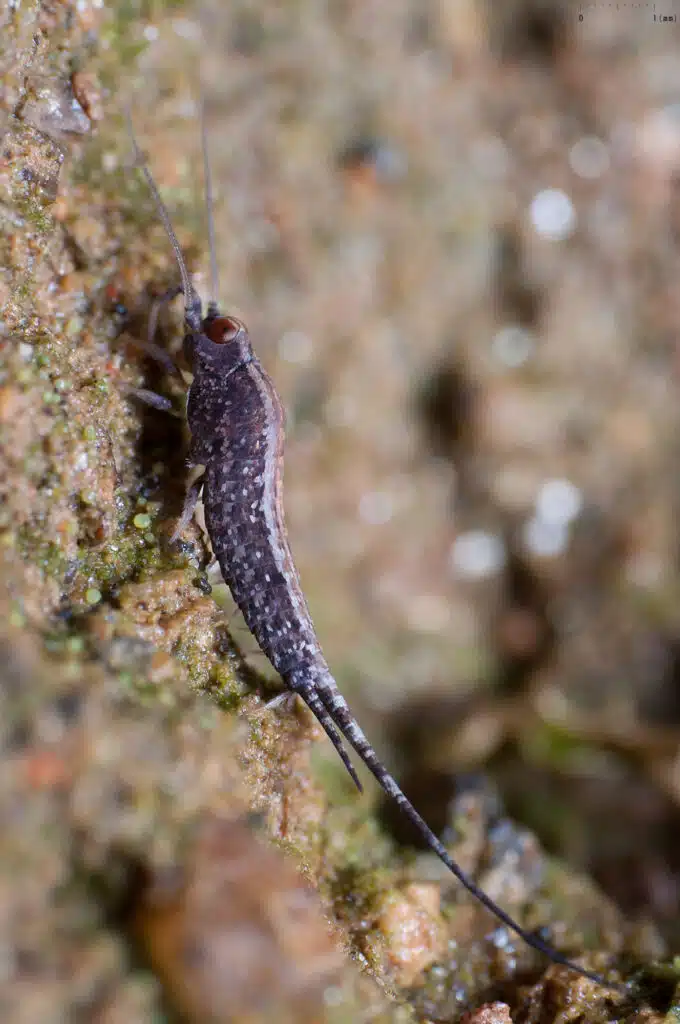
Jumping bristletails can jump up to 6 inches. These bugs resemble Silverfish but they have 3 tails. One of these tails is longer.
These bugs have no wings but they compensate for their movements with jumping abilities.
Known as some of the oldest bugs in the world, Jumping Bristletails have a glossy color that appears metallic. In direct sunlight, these bugs may appear similar to a piece of metal.
Unlike other types of hopping bugs, Jumping Bristletails aren’t known for moving indoors frequently. These bugs only move indoors by accident.
They love decaying organic matter, darkness, and humidity. This is why decaying leaf litter is among its favorite spots around the yard.
The bug is always found under large objects in the absence of leaf litter. This includes rocks and logs.
However, all areas of the garden with decaying organic matter can be home to plenty of food for Jumping Bristletails.
These bugs can live in compost-to-be, as well as in many other types of vegetation such as piled grass clippings or under piles of dead flowers or dead vegetables resulting from garden cleaning.
5. Earwigs
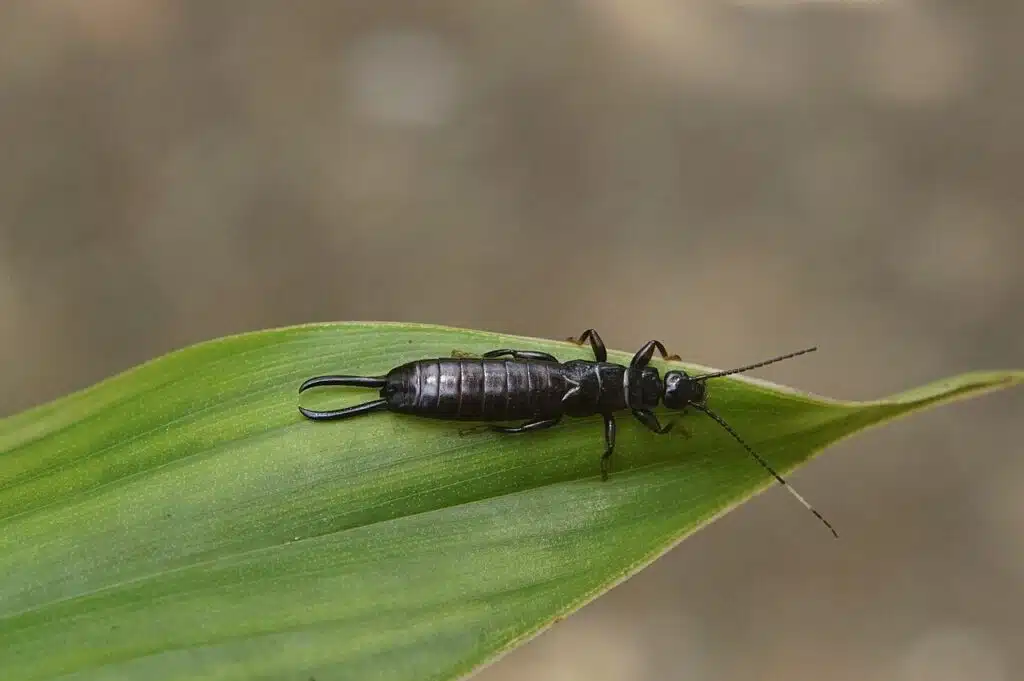
Earwigs are one of the most common species of non-native bugs in the US. While Earwigs have wings they can use, these bugs can also jump.
These bugs are a genus that can only jump over short distances.
Most people identify earwigs by their pincers. However, these pincers aren’t strong and the effects of earwig pinching are minimal.
Bugs of this genus are omnivores. They love to eat all types of food including decaying food such as plant matter.
Earwigs also eat other bugs and insects. Known for having an impactful appetite, earwigs look for food all day.
They do this in most areas that are also dark, especially underground.
It’s where they can find various plants and their roots.
Earwigs move for food in humid environments. This is why the basement is the most likely place where you can find earwigs inside of the house.
These bugs can be looking for food indoors without causing other types of damage. You may remove them by sweeping or vacuuming.
6. Jumping Spiders
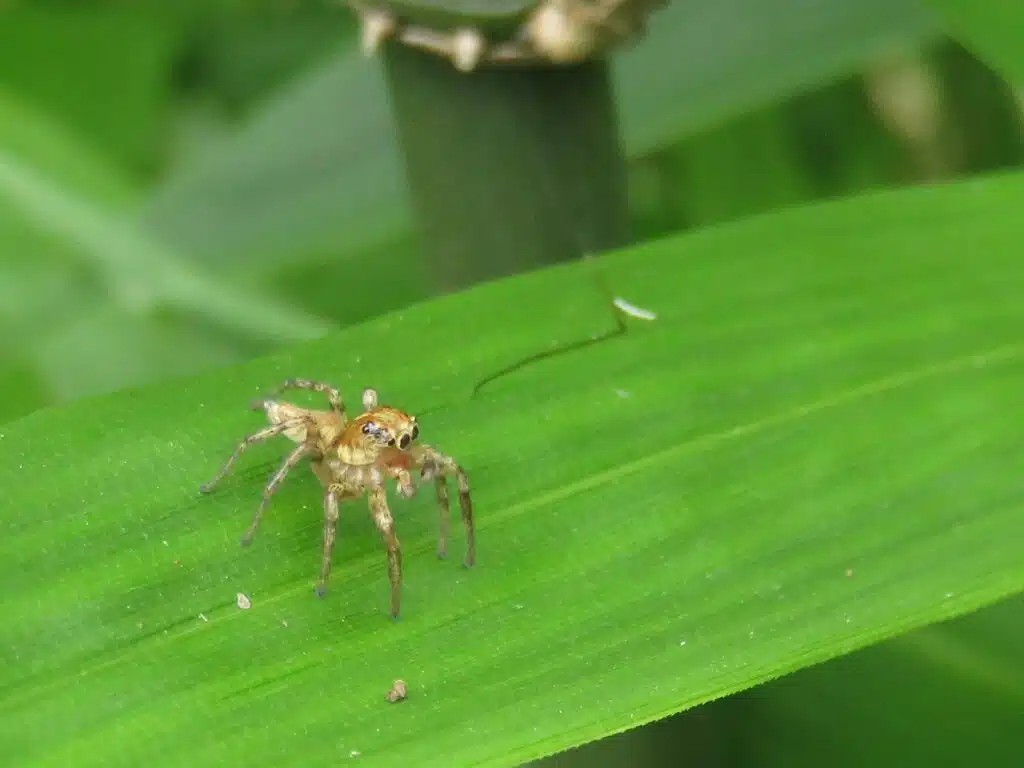
Jumping spiders are a very common pest in homes. These spiders also live outside their homes where they thrive due to their good hunting skills.
As the name of this genus implies, jumping spiders can jump. They can cover a distance up to a few times their body size with each jump.
These spiders have good vision and they wait for prey to get close before moving in for the jump when it’s within range.
Jumping spiders are generally known for eating insects. But many jumping spiders such as the Common Jumping spider also eat nectar.
Other species such as the Zebra spider are also known for having a distinct contrasting black and white coloring.
Jumping spiders enter homes for food. Unlike typical spiders, jumping spiders don’t build spider webs. As a result, these spiders can move to any corner of your house looking for mosquitoes, flies, or bugs.
Vacuuming and frequent home cleaning is one of the preventive measures against all types of hopping spiders.
7. Click Beetles
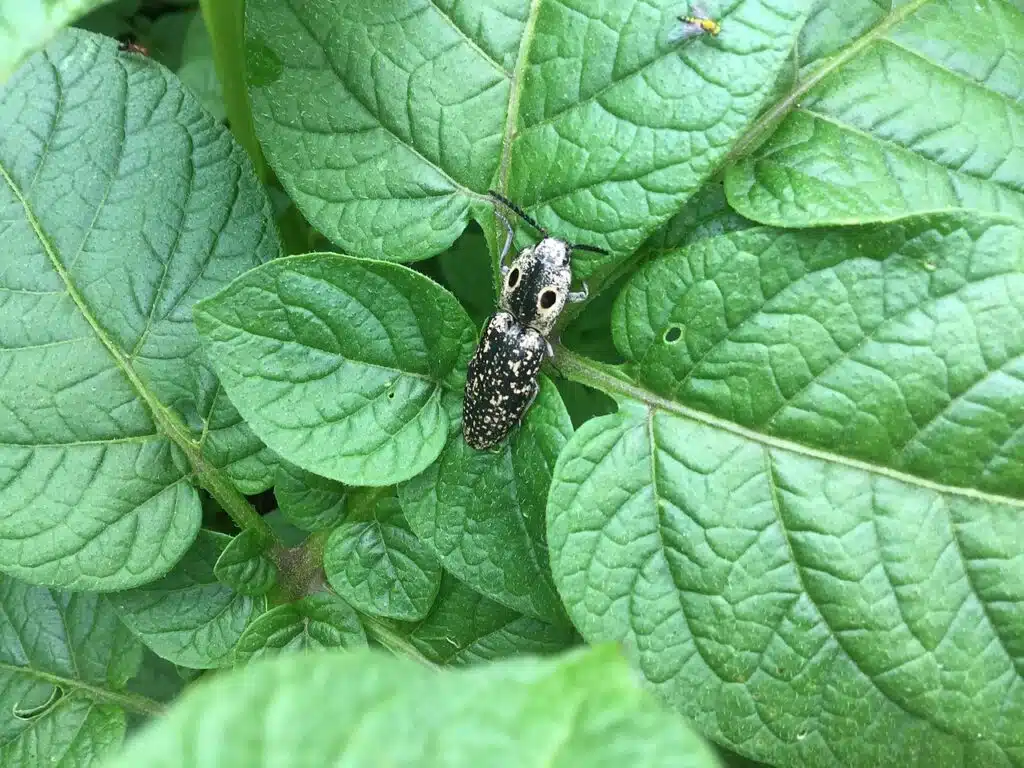
Click beetles grow to 18mm. These jumping bugs come in various colors as there are more than a few thousand types of Click beetles in North America.
The species is mostly known for its jumping abilities. This bug uses its back and an inner spring-like mechanism that propels it into the air.
Eyed relators are a species of Click beetles that can jump also found in North America.
This bug has a rounded abdomen which helps it propel itself into the air.
Like many other Click Beetles, the Eyed elevator has a fake pair of eyes behind its head. 2 black spots make it appear as if the species has larger eyes.
This form of mimicry is believed to be seen in the Click beetles using various defensive tactics.
Large eye-like dots on the body of Click beetles make potential predators perceive them as larger bugs and move along.
8. Flea Beetles
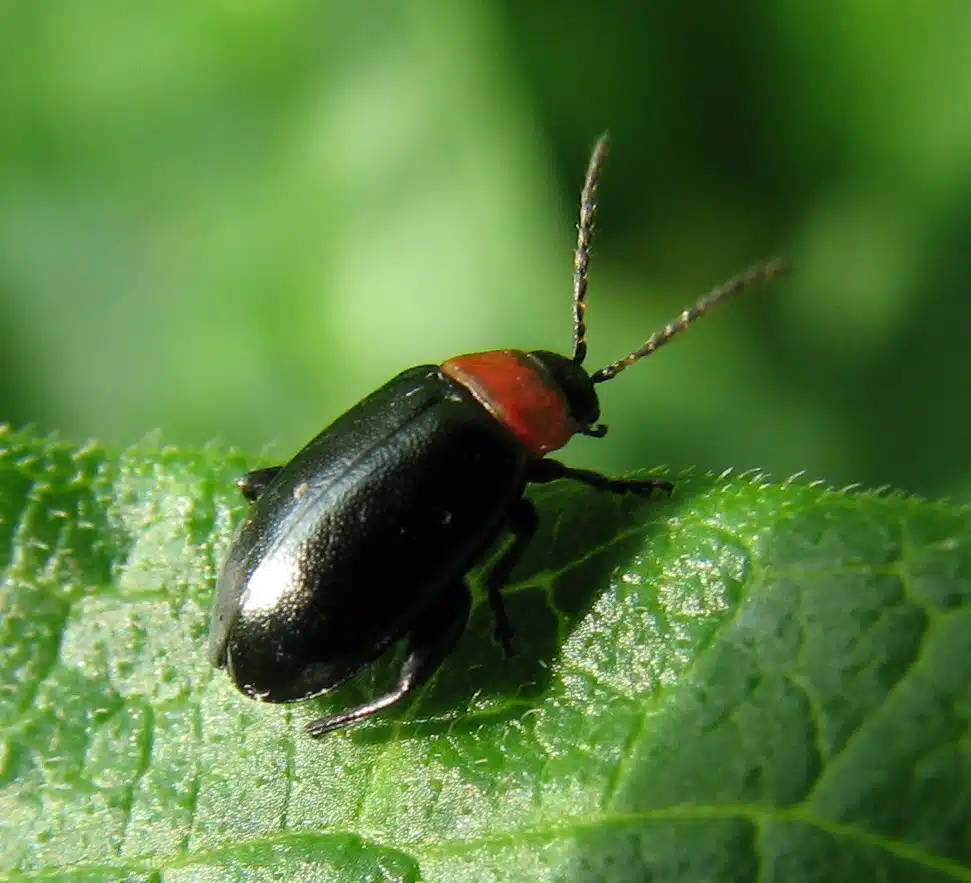
Flea beetles rarely get indoors but they can be a considerable problem and a serious pest on many crops.
These small bugs are black but they also come in many other colors. Growing to a size of up to ¼ inches, the bugs are small but still very visible on the green leaves they eat in gardens.
Their damage is typically limited to the leaves of various plants. Damaged leaves with holes in them can then lead to more serious problems.
Flea beetles are found all over the world. They cause economic loss by creating holes in leaves.
Catching these small bugs by hand is almost always a task impossible to accomplish. They always jump whenever you approach them. This means flea beetles always escape physical efforts to trap them.
As a result, pesticides are used to control the flea beetle populations across the world.
Catching these small hopping bugs on crops isn’t possible without learning more about them since they only invade certain types of crops.
Crucifer flea beetles invade crucifers while Pale-striped flea beetles feed on beans and similar crops.
It’s important to kill these bugs in their egg or larval stage if you see them in the garden as they only damage plants as adults.
Many other types of invasive garden bug larvae feed on crops.
9. Weevils
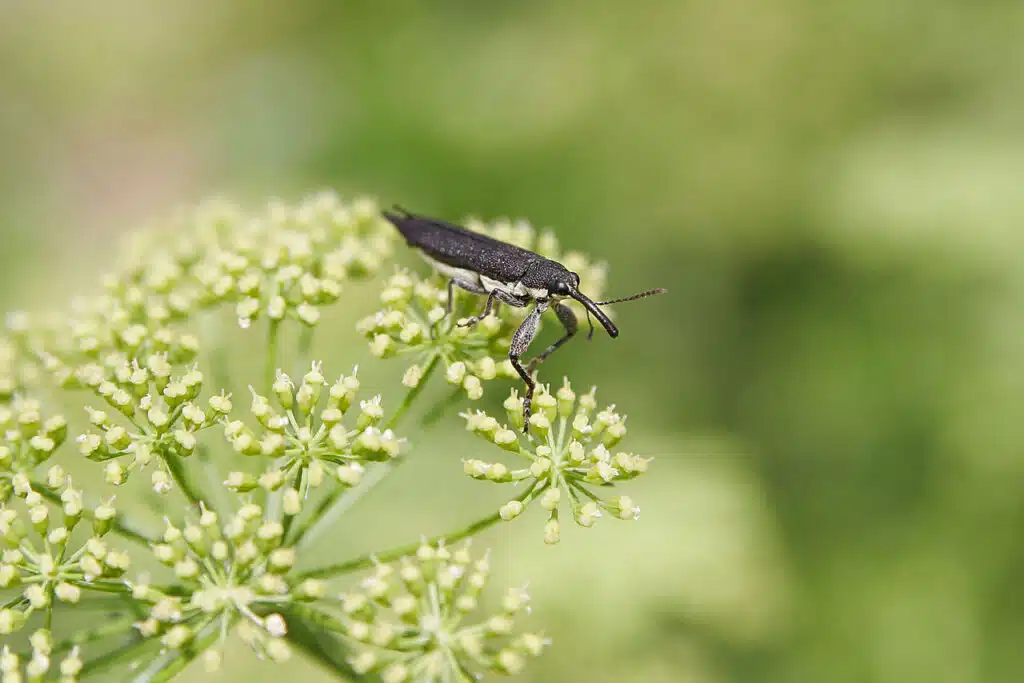
Weevils are beetles known for their dark color bodies and elongated snouts.
These types of bugs can jump. They extend the back legs to use momentum to jump further.
Weevils can only jump a few inches. Only a few species of weevils can jump as there are thousands of species of weevils.
Many of these bugs with elongated snouts make it indoors as well. They enter homes with food and they remain inside as long as they get plenty of food.
Granary weevils make it into the pantry by food. They enter homes with infested flour or grains and they start laying eggs and multiply in the pantry.
Weevils are also very common in stored food such as dry dog food.
Since they love dry grains and dry food, weevils tend to infest pantries where there’s old food or where they aren’t bothered.
Weevils can also enter homes from the outside.
It’s important to immediately clean and discard all the infested food. Simply removing the bugs from the stored dried food isn’t sufficient as weevils lay eggs in the food which can hatch a few weeks later.
These types of bugs can also overwinter when indoors.
As a result, weevils are a type of pest that can infest homes for long periods, even in the winter.
10. Phorid Flies
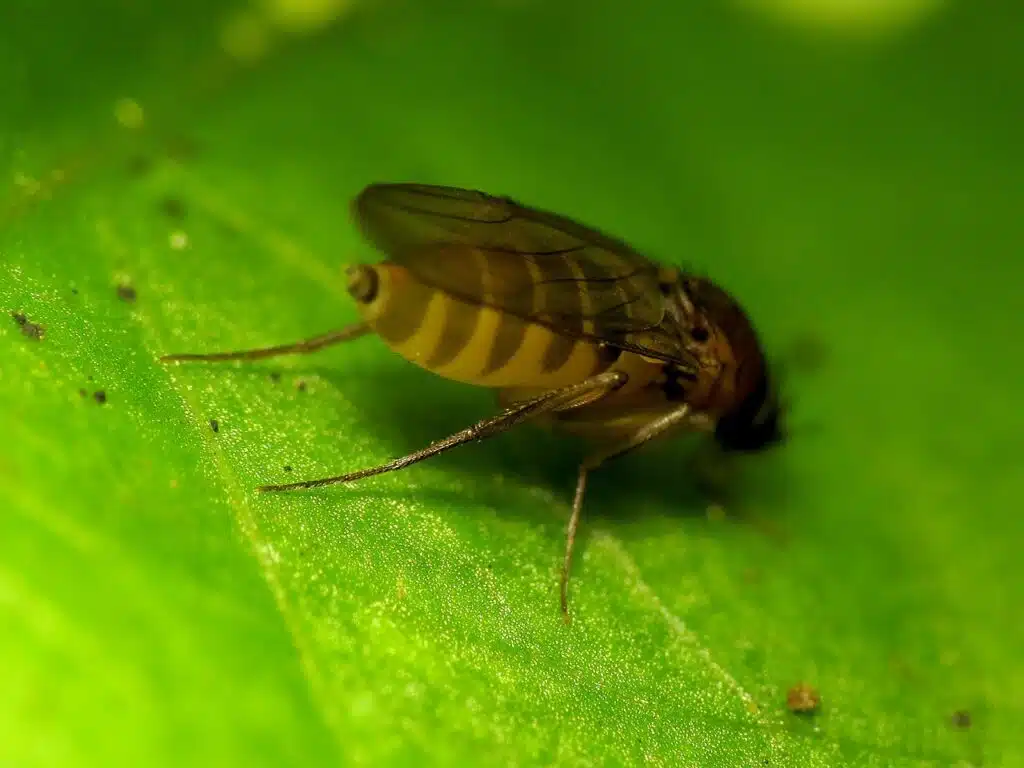
Phorid flies have different names. These flies are known as Coffin flies in certain areas of the world.
They use their walking and hopping abilities more than flying which inspires their name.
An atypical movement pattern and method is attributed to Phorid flies due to their ant-mimicry profile.
These flies are known as parasites of various ants. This includes Fire ants, common in many regions of the world.
Phorid flies move along towards nets which they kill for food.
They need to restrain from flying if they want to make it inside of the nest and being taken for ants by their parasite and host.
11. Praying Mantises
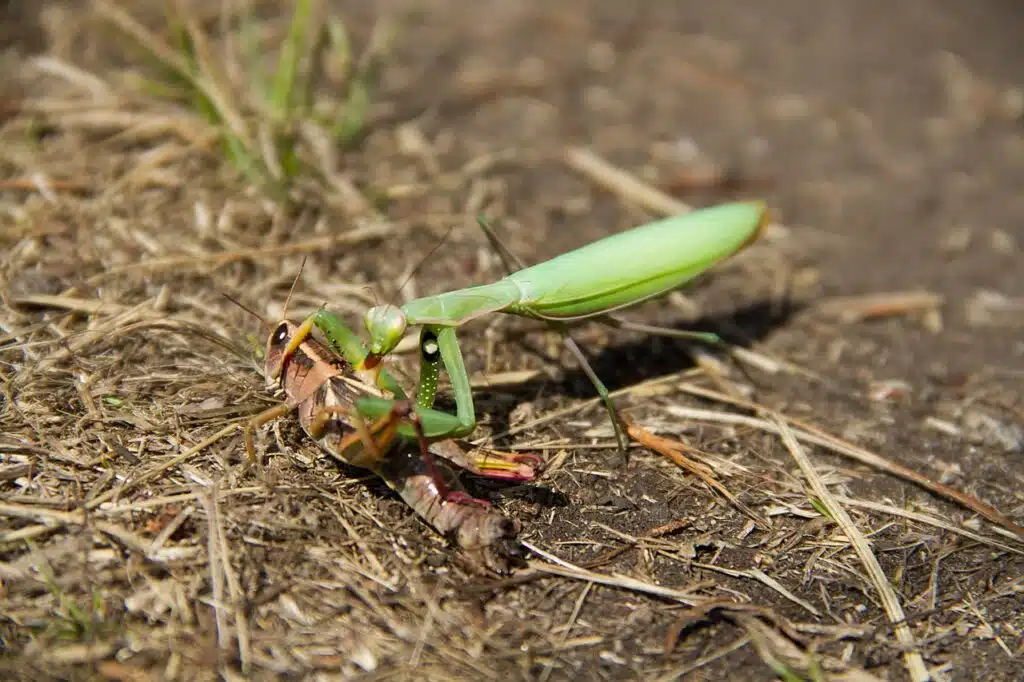
Praying Mantises are some of the earliest types of bugs known to fly. Early civilizations saw these bugs as having supernatural powers due to their hunting adaptations.
These bugs use camouflage to catch insects. They have a green color, a brown color, or a combination of other colors that helps them maintain camouflage and await prey on grass and other vegetation.
Praying Mantises only feed on live prey which means they have sharp skills.
These bugs can also jump. They rarely use their jumping skills but they also rarely use their flying skills.
Praying Mantises can stay still all day. They only start to fly at night.
This behavior is purely defensive. There’s a lower risk of being captured by predators at night.
Since Praying Mantises cannot defend themselves, they need to stay still during the day and only change locations at night.
This behavior is the general behavior of Praying Mantises and exceptions start to apply whenever these bugs get extremely hungry.
They will start to move closer to prey whenever they feel are truly hungry.
These bugs are also very popular as pet bugs. Their atypical shape and color, large eyes, and triangular heads make them stand out among other species.
Praying Mantises can turn cannibalistic in captivity. Females can eat males, especially after mating.
12. Jumping Slugs
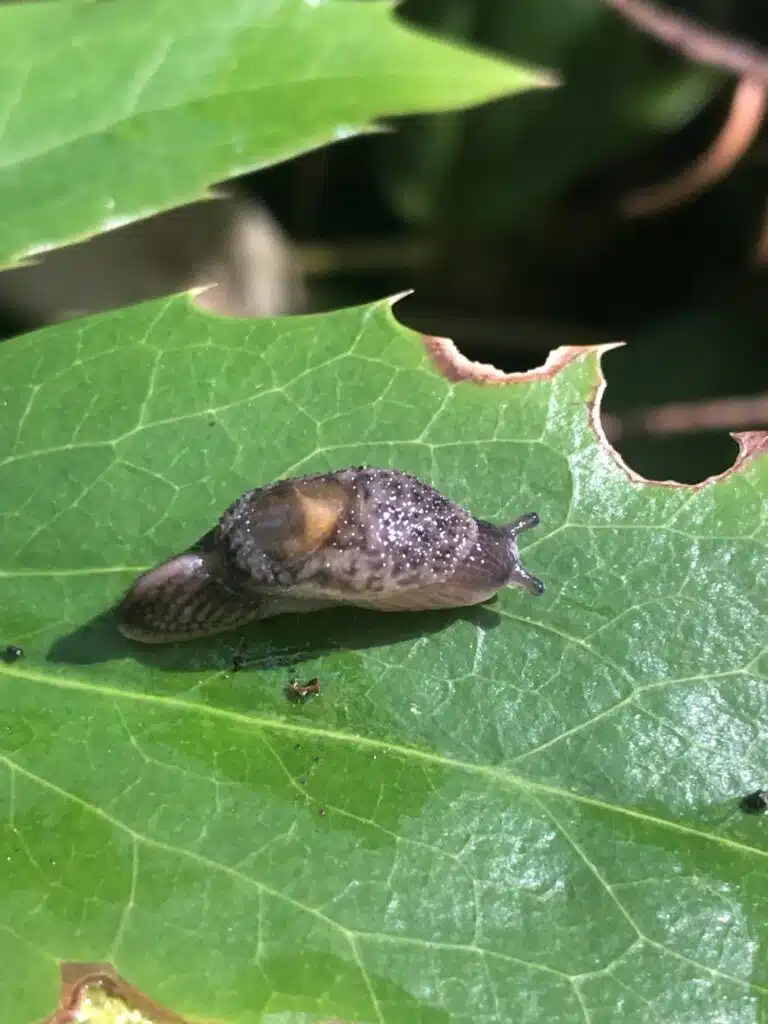
Jumping slugs are rare slugs in the US. Only one species of the jumping slug is found in the US and this is the Malone Jumping slug.
With the capacity to jump its way out of danger, this species is also known as the Humped Jumping slug.
This name has inspired the hump on its back which holds its internal organs.
Jumping slugs feed on various types of fresh and decaying vegetation.
They might only be seen after the rain as they come out of the ground when air humidity is high.
Known for leaving mucus trails as scent trails back to their hiding spots, Jumping slugs rarely rely on jumping just because they don’t want to lose their scent trails.
These slugs can overwinter in the ground and survive up to 6 years. Each of these slugs can lay up to 100 eggs per year which means garden infestations are likely whenever you see a single jumping slug.
Keeping these slugs out of the garden can be complicated. Various pesticides are recommended on crops while organic gardening is often subject to using nematodes as a way to control jumping slugs.
13. Leaproaches
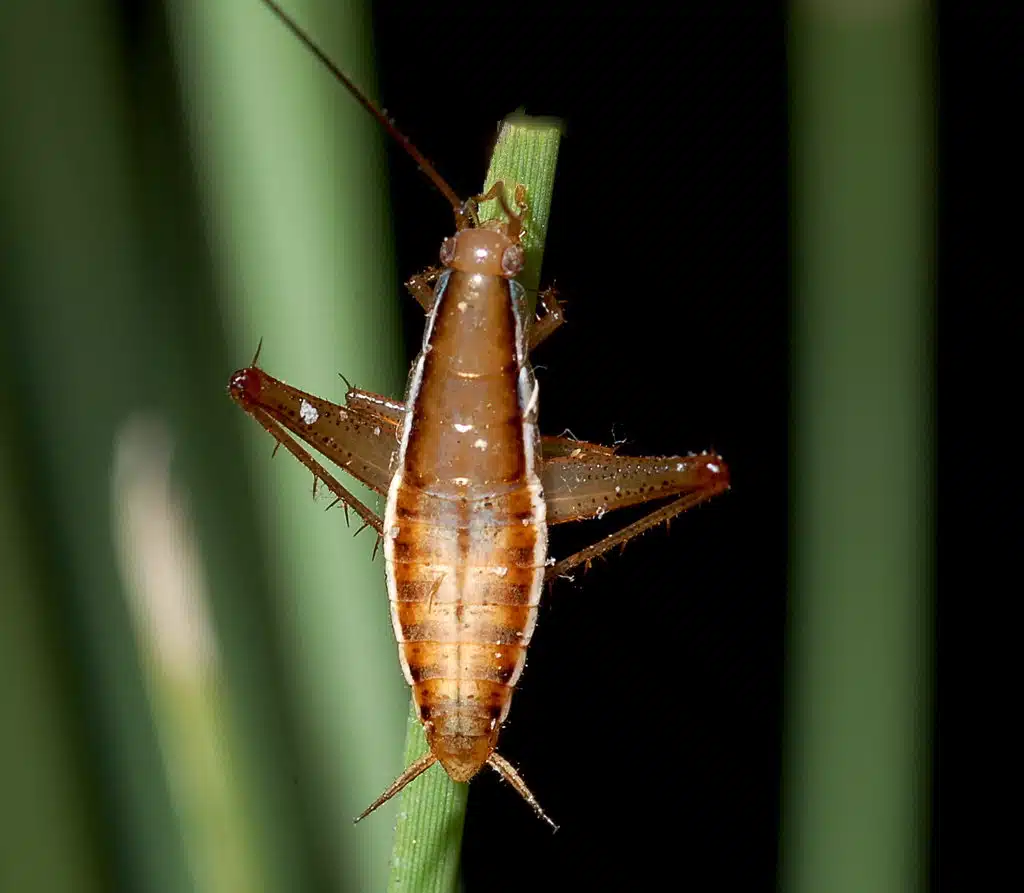
Growing up to 10mm, Leaproaches (Saltoblattella montistabularis) are the only species of jumping roaches in the world.
These bugs are highly common in Southern Africa where they are identified by a black body with brown and yellow coloring.
Bugs of this species have a teardrop shape.
Not much is known about this unique and very rare species
This date, Leaproachjes are only found in a remote area on The Table Mountain. These roaches use the tall vegetation in their habitat as jumping aids to move around quicker/
14. Jumping Worms
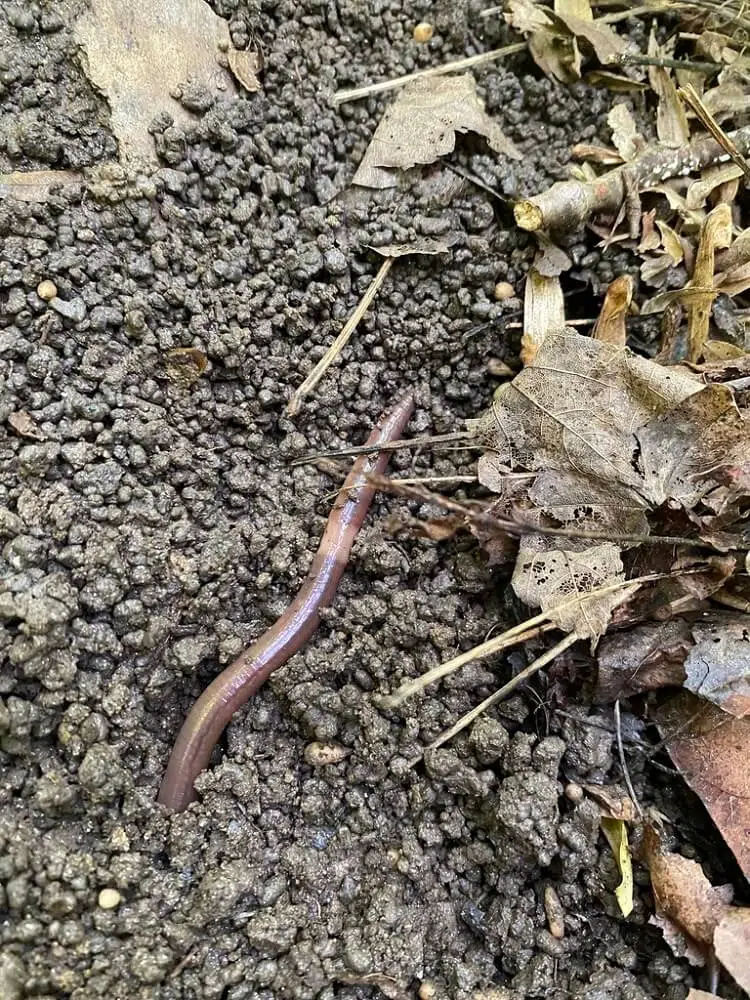
Jumping worms are an atypical type of worms now found in the US. First seen in Wisconsin around the 19th century, these worms are believed to be imported from Asia.
Their behavior is similar to many earthworms found in gardens but at a much faster rate.
These worms eat their way through vegetation faster. They are a menace to gardens as they multiply faster as well.
Jumping worms can jump high to escape predators and even humans.
Worms of this genus are known to shed their tails if you grab their tails as well
Not known for docile behavior, jumping worms become aggressive and start jumping around when uncovered in the garden.
While pesticides kill jumping worms, they also hurt your garden.
Keeping an eye on compost and compost sources is key when it comes to not introducing this species of Asian worms that can jump in your garden.
Today, these worms are already established in parts of the US. All jumping worms you find in gardens need to be killed as these worms multiply at faster rates compared to standard earthworms.
15. Jumping Plant Lice
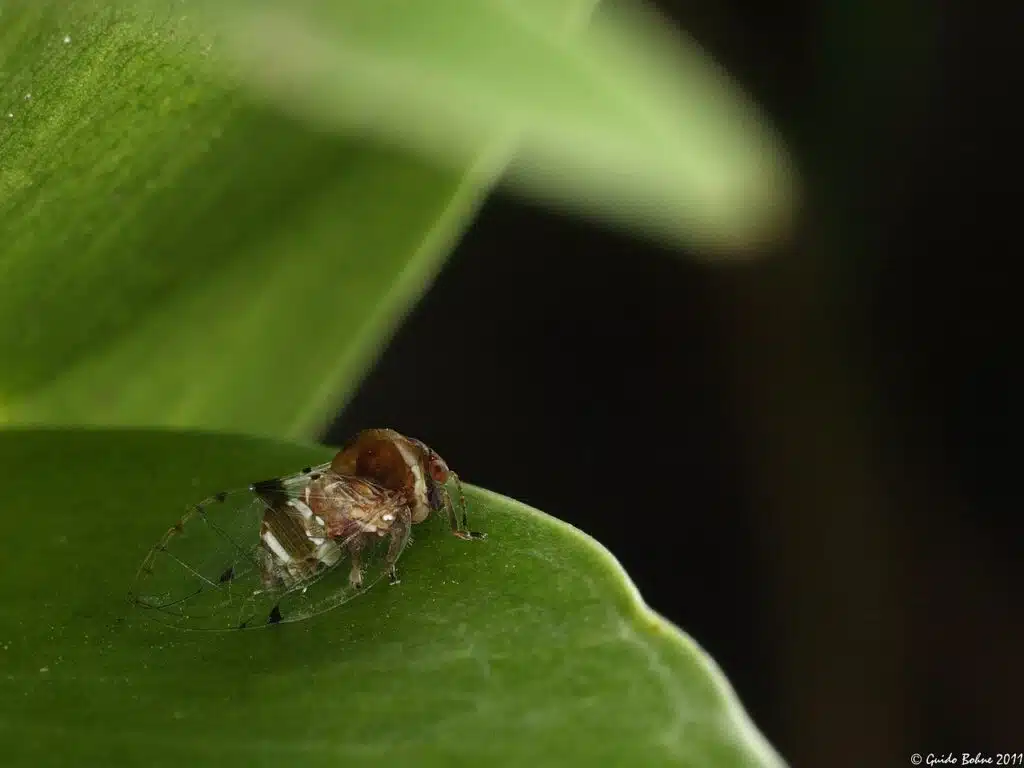
Jumping Plant Lice or Jumping Louse are some of the common sap-sucking bugs in the world.
There are thousands of these bugs within sub-species and each has different feeding habits.
Jumping Plant Lice is normally plant-specific. They might only be found on a given plant given they suck the sap of a single type of plant.
These types of bugs have elongated mouthparts used to pierce plants and suck sap.
Damages created by these bugs are minimal but they can invade crops and even kill plants.
Their mouthparts are very thin and needle-like. But this doesn’t stop these small bugs from drinking the sap out of plants to the point they die.
Similar to aphids, these bugs move on to a given type of plant, feed on it, and lay eggs on it as well.
As their name implies, these small brown bugs jump. Catching and removing them by hand can be complicated as a result.
One of the measures taken against these small bugs is the introduction of predatory species such as ladybugs.
Some farmers even go to extreme lengths such as covering the crops with fine nets which keep these bugs out.
However, pesticides remain the certain solution against these bugs in many parts of the world.
16. Thrips
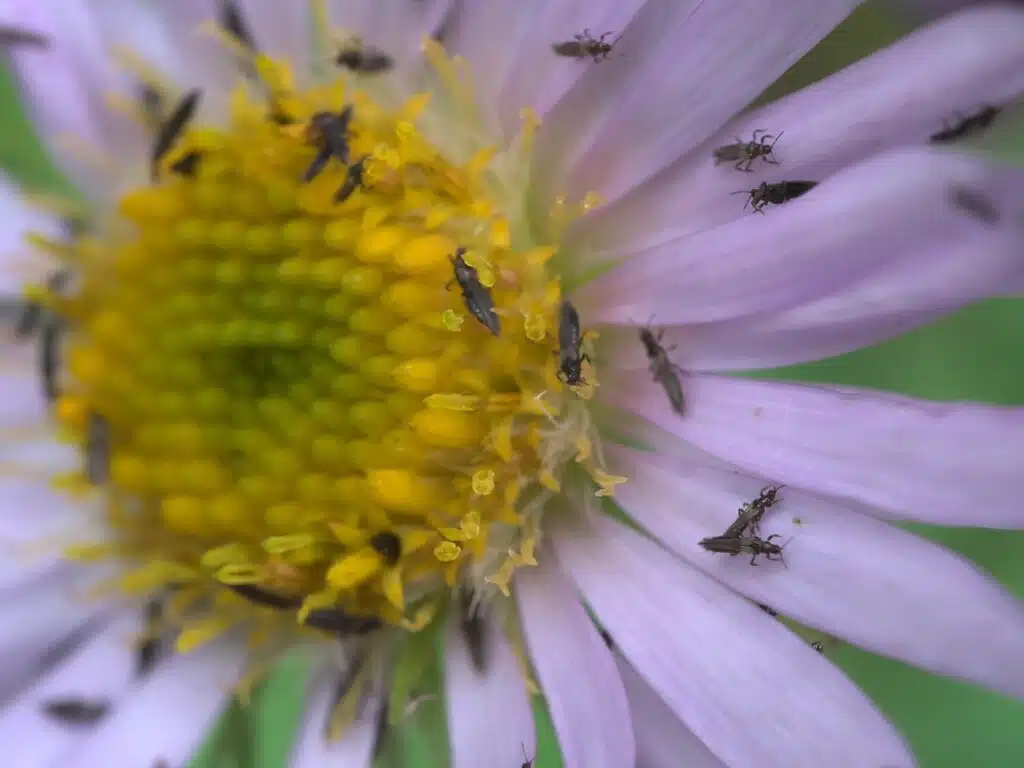
Thrips are very small long bugs with a body size of up to 14mm.
Small bugs of this genus are very common in almost any garden. These bugs can jump but their reduced size makes them harder to spot even when jumping.
Thrips feed on plants, particularly on plant leaves. They suck sap and overcrowd plants to the point of killing them.
Most infected plants show signs such as changing the shapes of leaves or dark spots on the leaves.
Multiple homemade solutions such as cleaners and water are used to kill these bugs.
However, thrips are bugs that can be kept away with other non-invasive solutions.
You can even consider attracting predatory bugs which immediately eat thrips.
Ladybugs, green lacewings, assassin bugs, and Robber flies are just a few predatory species that help control the population of thrips in your garden.
The key is to plant the blossoms that attract these bugs to your garden. This includes alyssum flowers and a wide range of flowering herbs such as wild mint, fennel, and lavender.
17. Grasshoppers
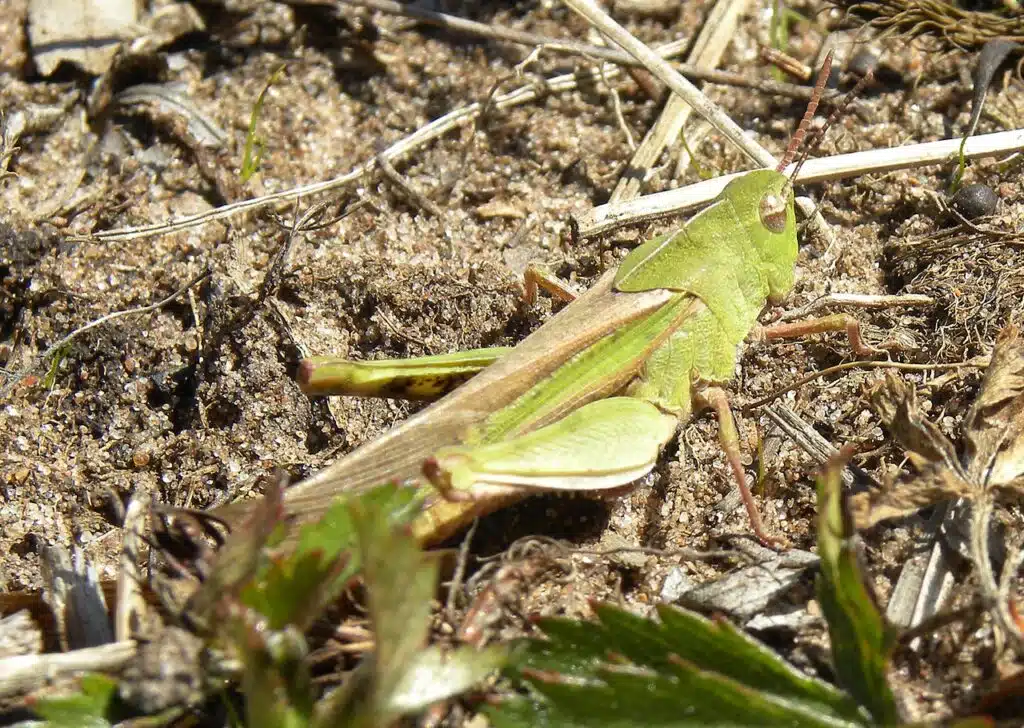
Grasshoppers are some of the oldest jumping insects in the world. Now common in gardens, parks, pastures, meadows, and next to forest edges, these bugs are known to jump long distances.
Grasshoppers can jump a distance a few times larger than themselves easily.
Bugs of the genus may be seen as local protein-rich food in some cultures around the world, but they can destroy crops easily.
Grasshoppers eat about half their body weight in food each day. Furthermore, they can be social which means these bugs eat vegetation in groups creating considerable damage.
Apart from jumping, the impact of grasshoppers is also aided by their flying abilities. They can easily move on to the next source of food.
18. Katydids
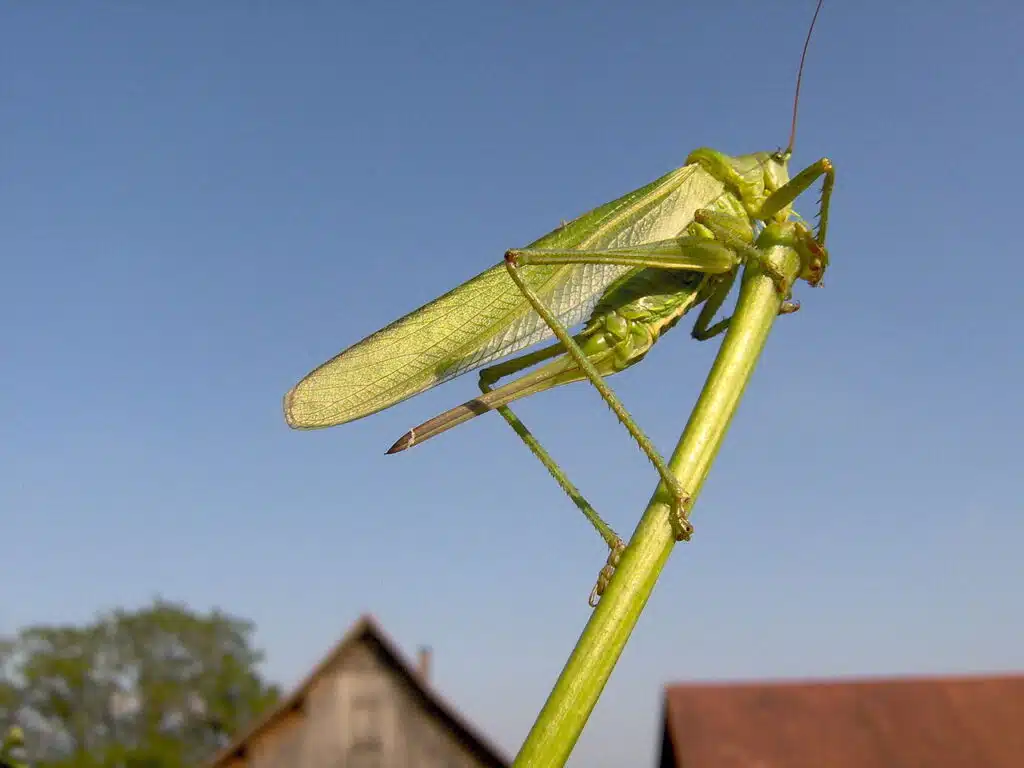
Katydids are a common sight in North America. These bugs have been originally called Longhorn grasshoppers due to their ability to jump.
This ability is only used when disturbed as these bugs prefer not to jump around without reason.
Known for their elongated bodies, Katydids can also cause damage to crops and ornamental gardens.
These bugs are green, green-brown, or brown. They are seen on flowers and vegetation in every state.
Katydids are among the few jumping bug species where females seek out males for mating. This puts females at a higher risk of predation.
19. Crickets
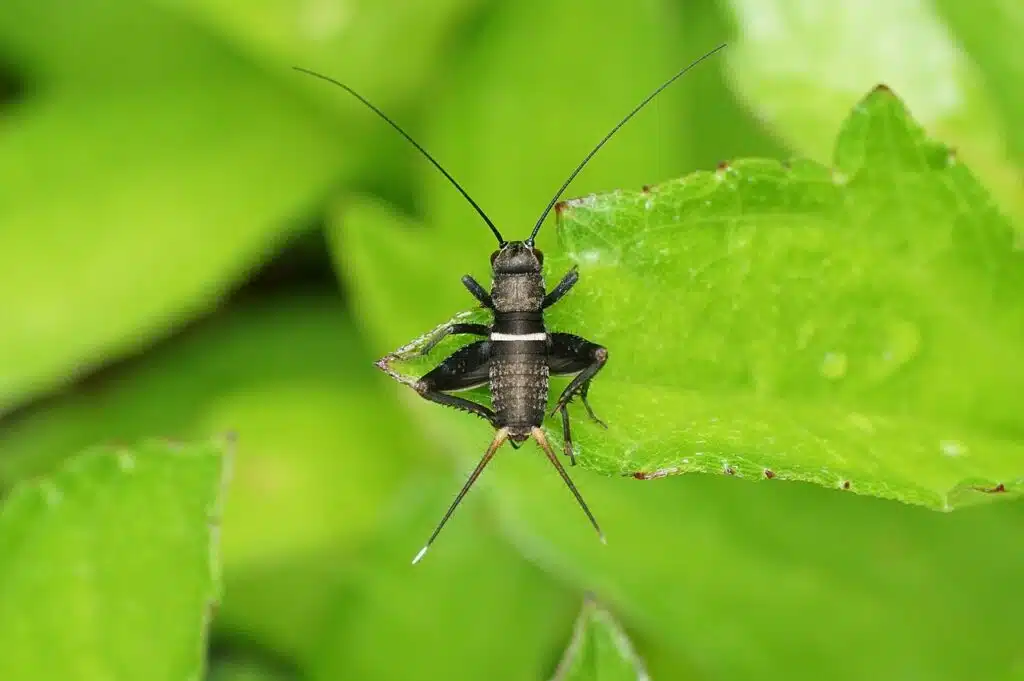
Known for their robust bodies, Crickets have a black or brown color.
Crickets are some of the most versatile bugs that can jump. They use the muscular power of the legs to jump and they make the most of moving around quickly when it comes to feeding.
There are many types of crickets in the world. Those found in gardens are generally herbivorous. They eat living and dead plants.
Other crickets are omnivorous. They can eat plants, fungi, and even bugs such as aphids.
Crickets can be both detrimental and useful in gardens. While they can eat vegetation, they can also eat the bugs that are seen are regular pests in the backyard.
Crickets that are omnivorous have more powerful jaws. Since these bugs have strong jaws it’s best to avoid touching them.
Crickets can bite humans when roughly handled.
20. Leafhoppers
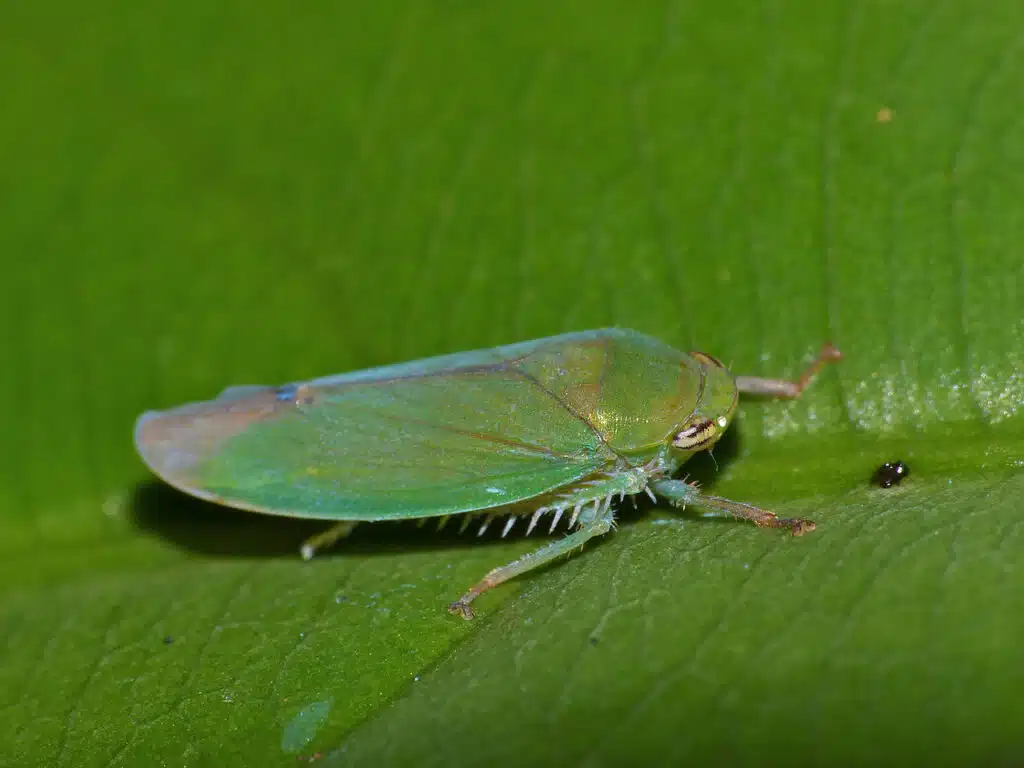
Peppers are some of the most damaging hopping bugs around. These bugs eat vegetation but they also lay eggs in vegetation.
Eggs are injected into various leaves grasshoppers feed on. Furthermore, these bugs feed on vegetation and they even insert saliva into plant leaves.
The saliva causes a reaction that is visible in small colored bumps.
As a result, plants eaten by leafhoppers can die.
These bugs are found all over the world. They are adapted to temperate and warm tropical climates alike.
You can control leafhoppers by introducing and encouraging predators such as wasps.
21. Treehoppers
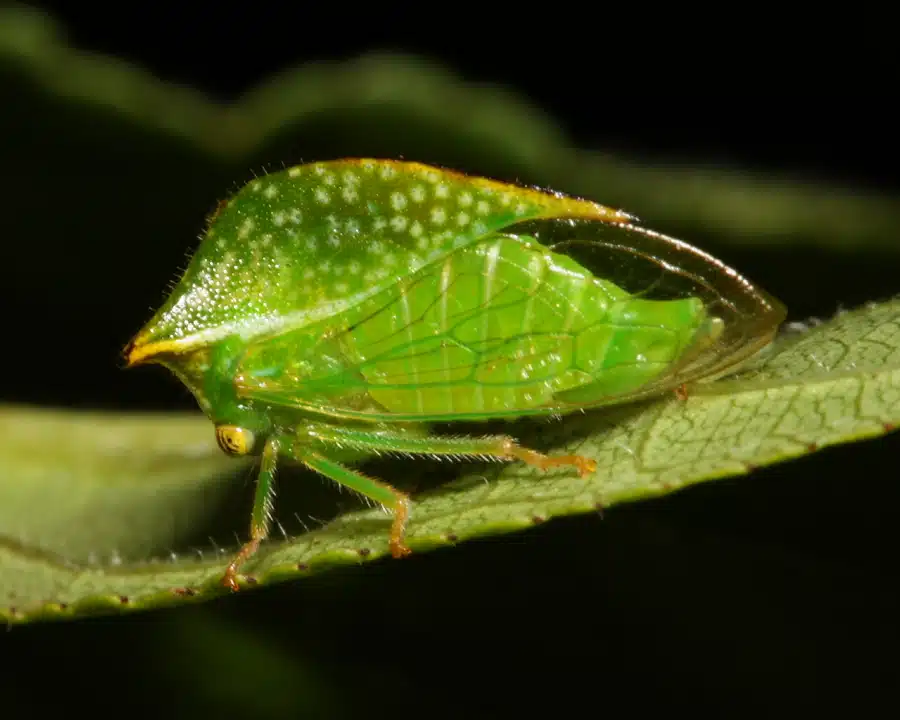
Treehoppers are some of the most common hopping bugs found around the world.
These bugs live on all continents but not in Antarctica.
Bugs of the genus come in various colors and color combinations from green to black.
They eat plant sap and are known to hop around.
Treehoppers have a detrimental role on the vegetation they feed on as they can cause stunted plant growth.
Adult treehoppers also release a lot of honeydew behind them following each meal. This sweet sticky substance attracts plenty of ants on plants and trees.
22. Froghoppers
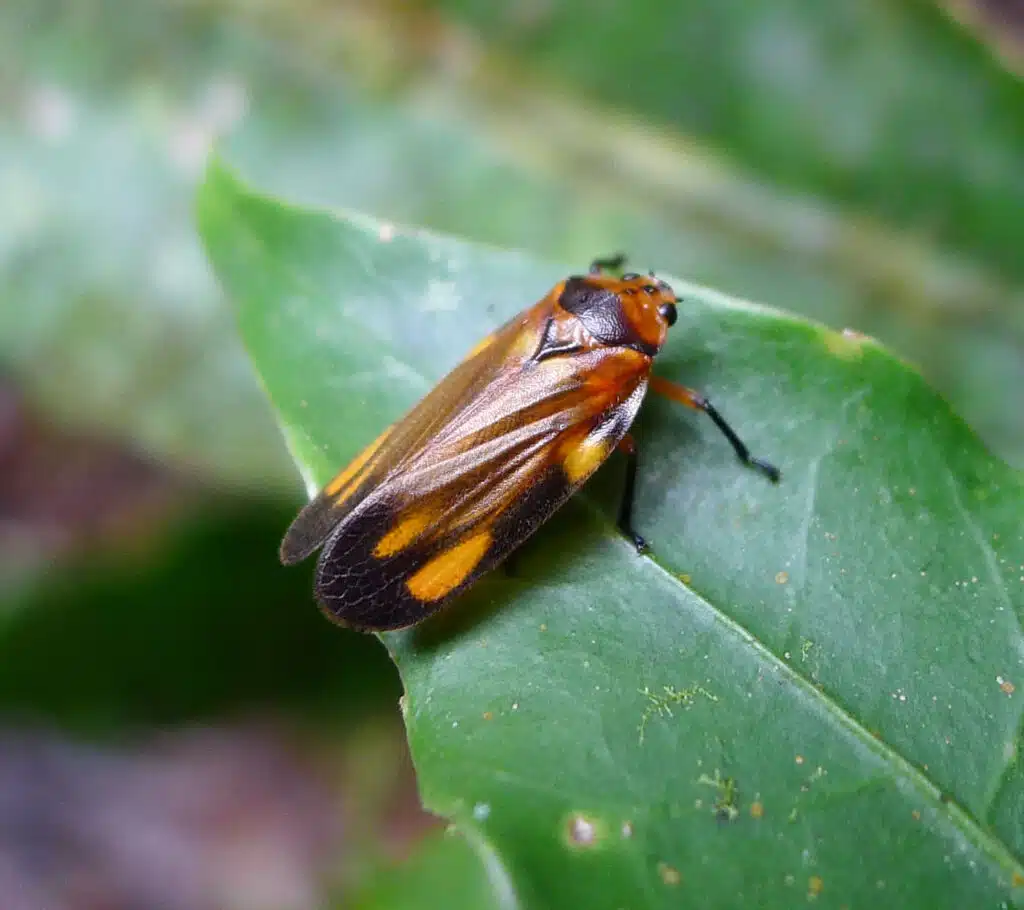
Froghoppers are a type of hopping bug named after frogs. Their ability to jump like frogs is what inspires their name.
These bugs also have heads that are shaped like the heads of frogs.
Froghoppers can jump long distances of about 27 inches at best.
This is rare given these bugs are larger than others that can jump such long distances.
Muscles in the legs of these bugs are responsible for this jumping power which equates to a few hundred times G-force gravities.
There are thousands of froghopper species, each with its color.
Some of the most interesting froghoppers are found in Africa. They produce spittle which is a type of saliva that may even drip from trees in case of a serious froghopper invasion.
23. Lacewings
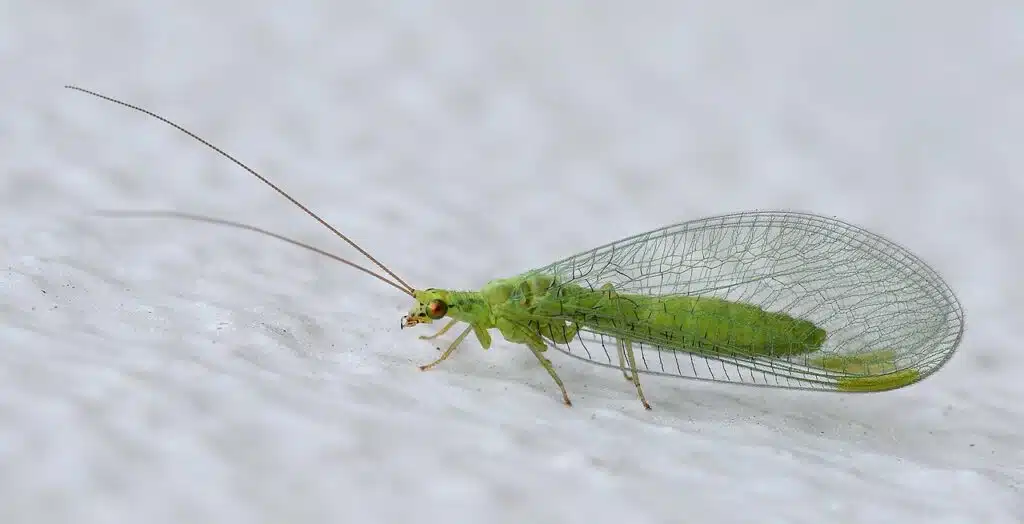
Lacewings are some of the common green jumping bugs in gardens. They can jump and fly using their long wings.
The diet of lacewings is vast. Bugs of this genus are omnivores which means they eat pollen, nectar, as well as insects and bugs such as aphids.
Lacewings are seen as a beneficial species in the garden because of their diet which includes common garden pests.
These bugs live solitary lives and the chances of seeing tens of them together are slim.
Lacewings are also beneficial in pollination.
They have known as plant pollinators and are considered beneficial even if they can eat pollen themselves.
24. Stick Insects
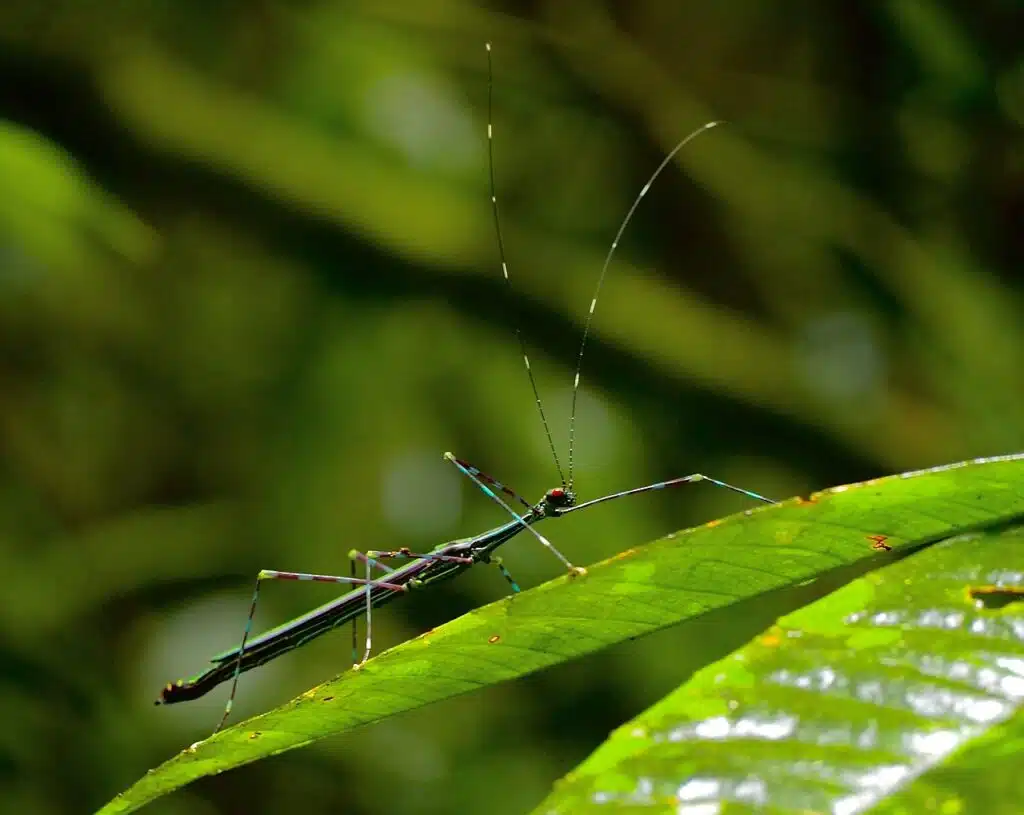
Stick insects are also known as Walking sticks due to their thin elongated body.
These types of insects remain elusive due to their secretive lifestyles. Many stick insects live around the world.
There are multiple species of stick insects in the US in either green or brown-gray coloring.
The size of these insects varies from 0.5 to 15 inches.
Often overlooked as they spend the entire day motionless, stick insects are known for feeding on grasses.
Grasslands and woodlands are among the favorite habitats of these species. You can also find these insects on prairies and other types of habitats which also include tall vegetation.
These insects only move at night when there’s a reduced risk of predation.
Spiders and birds are the main predators of the species.
Numerous types of stick insects in the US can hop. These insects may or may not come with wings but almost all of them can jump.
25. Ants
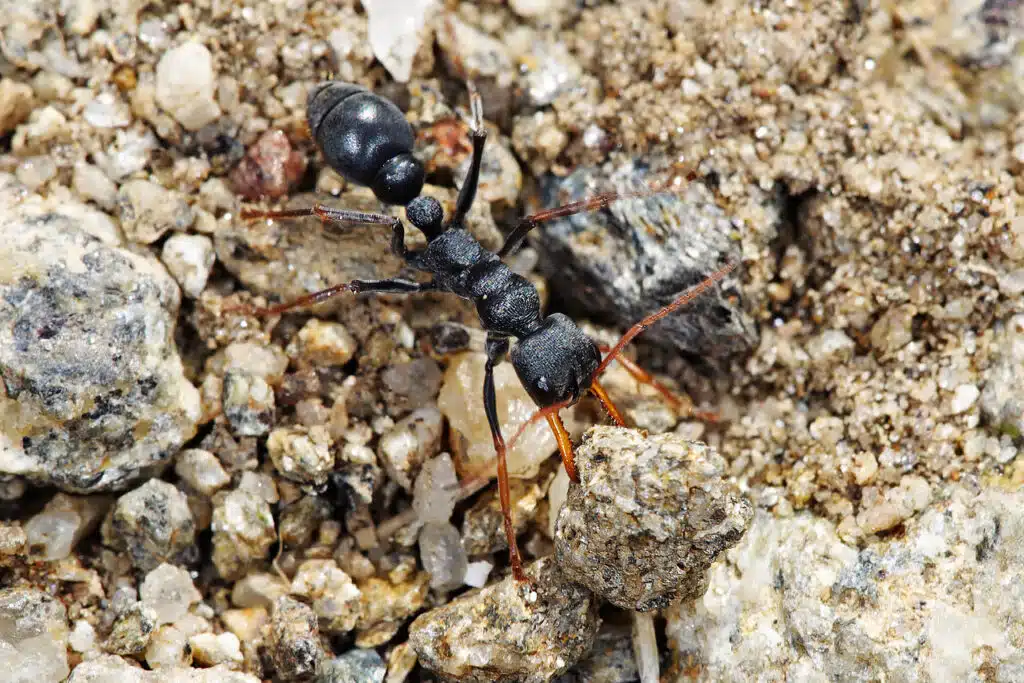
Ants are some of the most widespread species around the world. There are multiple types of ants in the US but there’s a highly common species of jumping ant in Australia.
Part of the Bull ants subgroup, the Jack Jumper ant is the most common jumping ant in the world.
This type of ant has excellent vision and good hunting skills since it can also jump.
Despite their hoping abilities, this ant is feared by locals due to their potent venom.
Jack Jumper ants can sting and this comes with venom in many instances.
This venom is so potent that the stung area or the face can remain swollen for days. Medical attention might be needed for those who have allergic reactions to ants.
The diet of this jumping ant is diverse, as they are both predators and scavengers.
Larvae of these ants only eat dead insects adults collect for them. Adult ants are scavengers and carnivores.
They spend a lot of time looking for insects and other types of food including decaying food.
Ants of this genus can be seen jumping during the day as diurnal species. They live in colonies under the rule of a single queen.